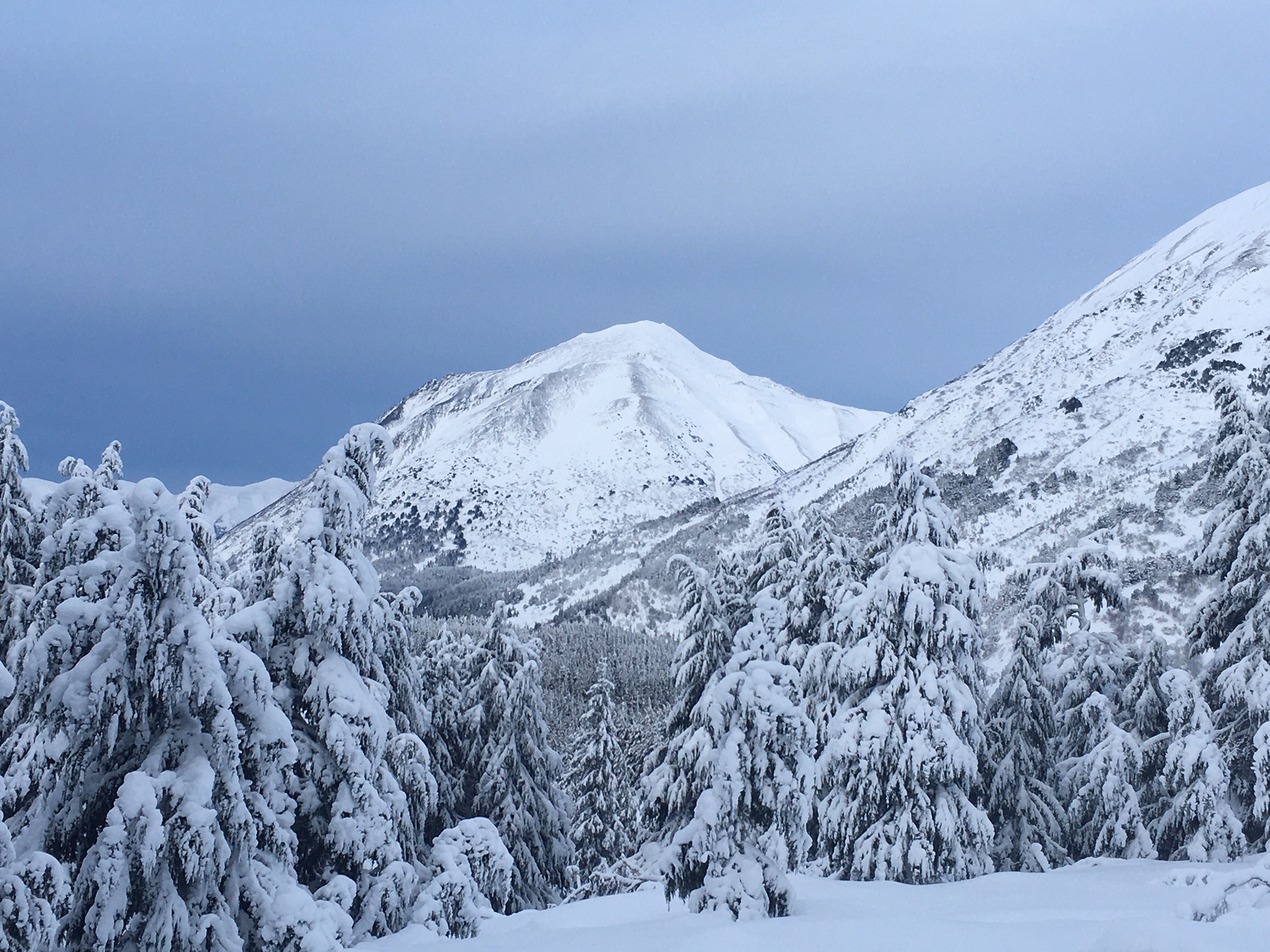With a quiet weather day on tap today (cloudy skies, an inch of new snow and light variable winds), our main avalanche concern lies with lingering wind slabs that either formed early yesterday morning or during the high winds on Tuesday. These lingering slabs could be hidden under a skiff of new snow and found lower on the slope than expected, for example below mid-slope rollovers or in cross-loaded gullies. They are also generally on the harder side, which could allow them to not break until a person is further out on the slope. The higher in elevation one goes, and into more exposed wind affected zones, the more likely wind slabs will be lurking. Although these were fairly stubborn yesterday and should be on their way to bonding more today, it is still something to keep a close eye out for.
If visibility is good enough to get to the steeper slopes, watch for the classic wind slab signs:
- hollow, or drum like, feeling snow?
- stiff snow over soft snow?
- cracks in the snow around you that shoot out?
 Very Chistmasy in the mountains yesterday! This photo shows significant wind effect on Peak 4940 that is across from the Johnson Pass trailhead and the furthest point of Seattle Ridge. 12.25.20
Very Chistmasy in the mountains yesterday! This photo shows significant wind effect on Peak 4940 that is across from the Johnson Pass trailhead and the furthest point of Seattle Ridge. 12.25.20

 Very Chistmasy in the mountains yesterday! This photo shows significant wind effect on Peak 4940 that is across from the Johnson Pass trailhead and the furthest point of Seattle Ridge. 12.25.20
Very Chistmasy in the mountains yesterday! This photo shows significant wind effect on Peak 4940 that is across from the Johnson Pass trailhead and the furthest point of Seattle Ridge. 12.25.20